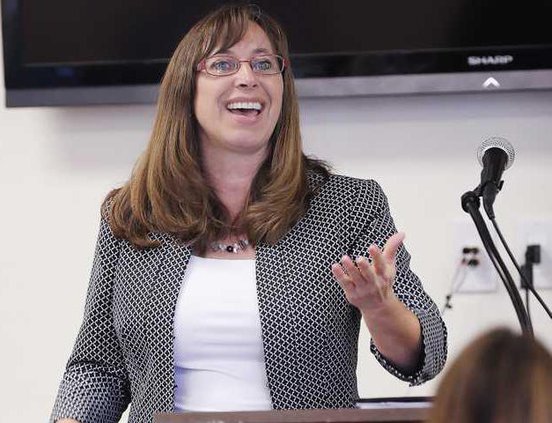The apple cores kids toss into orange garbage cans at Woodward School, spoiled produce tossed out by Food-4-Less, and leftovers cleared from plates at Applebee’s will one day help take the equivalent of 2,338 vehicles off Northern San Joaquin Valley roads when it comes to air quality impacts.
That’s because Manteca is posed within two years to become the second entity in California to convert food waste into fuel in the form of liquefied natural gas to power the city’s fleet of solid waste collection trucks. The other food to fuel conversion facility is in Marin County.
City of Manteca Wastewater Systems Superintendent Heather Grove updated Manteca Rotarians on the $29.2 million project during a meeting Thursday at Ernie’s Rendezvous Room.
The project — fashioned by a team effort led by Deputy Public Works Director John Clymo who accepted another position two months ago — is the answer to three major problems. They are a state mandate that essentially requires cities to stop burying food waste in landfills. A second state mandate dictates that air quality be improved to 1990 levels or a 40 percent reduction in the current levels of pollutants. The third is a marching order from the Manteca City Council to position solid waste and wastewater operations so they will have the lowest cost to ratepayers over the long haul.
The system is expected to be fully operational by 2019.
The biggest tab — nearly $20 million — is for the replacement and adding of aging disgeters at the wastewater treatment facility. The digesters after decades of use are not only in bad repair but also no longer meet stricter San Joaquin Valley Air Pollution Control District standards.
Money to replace the digesters has been put aside over the years. The contract to do the work has already been awarded.
“We had to replace the digesters anyway,” Grove noted.
A mechanical separator to work food waste from contaminates is being out in place at the Lovelace Landfill just over two miles north of Lathrop Road where Manteca now takes its garbage. Although expensive, it is significantly cheaper than hiring workers to manually rake through the food waste and literally pick out stray contaminates. The machine will also grind the food waste into a slurry that will be trucked back to the wastewater treatment plant.
A receiving station and facilities to combine the food waste that also will add FOG — fats, oils, and grease — from restaurants with methane gas from the wastewater treatment process will be built at the West Yosemite Avenue treatment plant.
A compressed gas fueling station is also being built at the treatment plant. The city’s solid waste operations will be moved there as well so trucks can be fueled overnight.
Grove noted the alternative that most jurisdictions ae pursing — using the food waste and methane gas to generate electricity — didn’t make as much sense.
Manteca is moving ahead with a solar farm to provide half of the electricity needed to power the plant to cut the $1.2 million energy bill to run the plant.
Besides, the co-generation process doesn’t complete eliminate issues with the methane gas creating air quality issues.
There are 183 collection points in Manteca currently for food waste — all of Manteca Unified school sites and a number of businesses.
It is now being combined with plant materials at a Lathrop facility to make compost until the city’s food to fuel system is up and running.
To contact Dennis Wyatt, email dwyatt@mantecabulletin.com
FOOD TO FUEL
Taking equivalent of 2,338 cars off road





